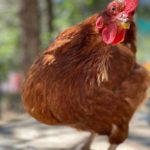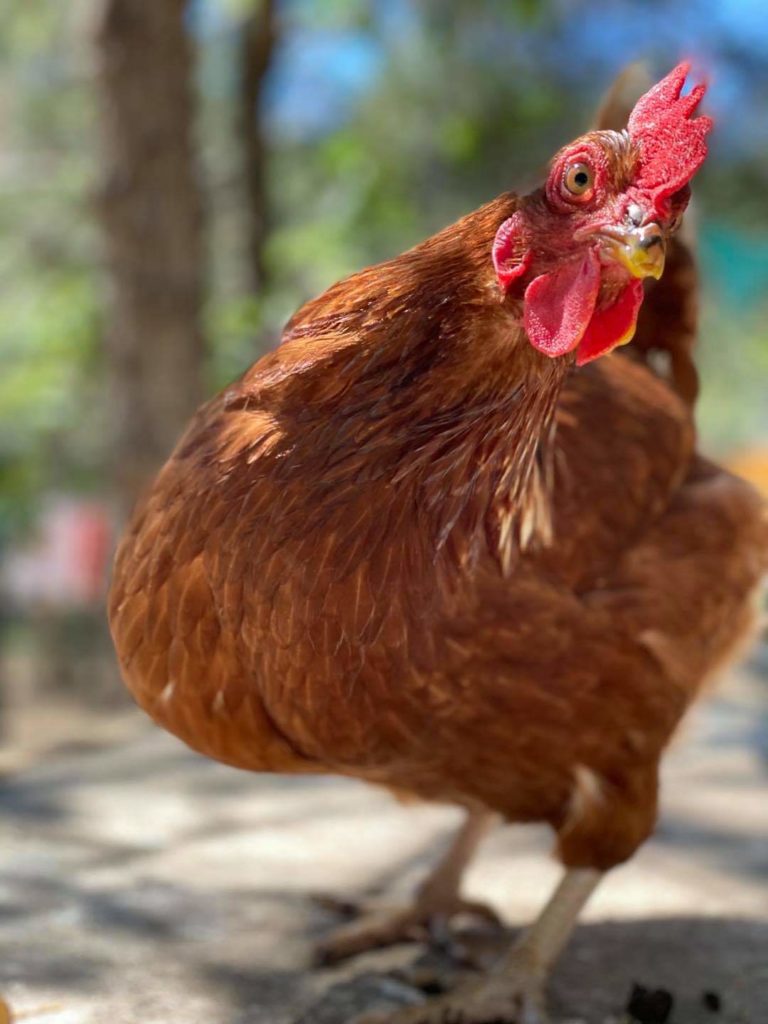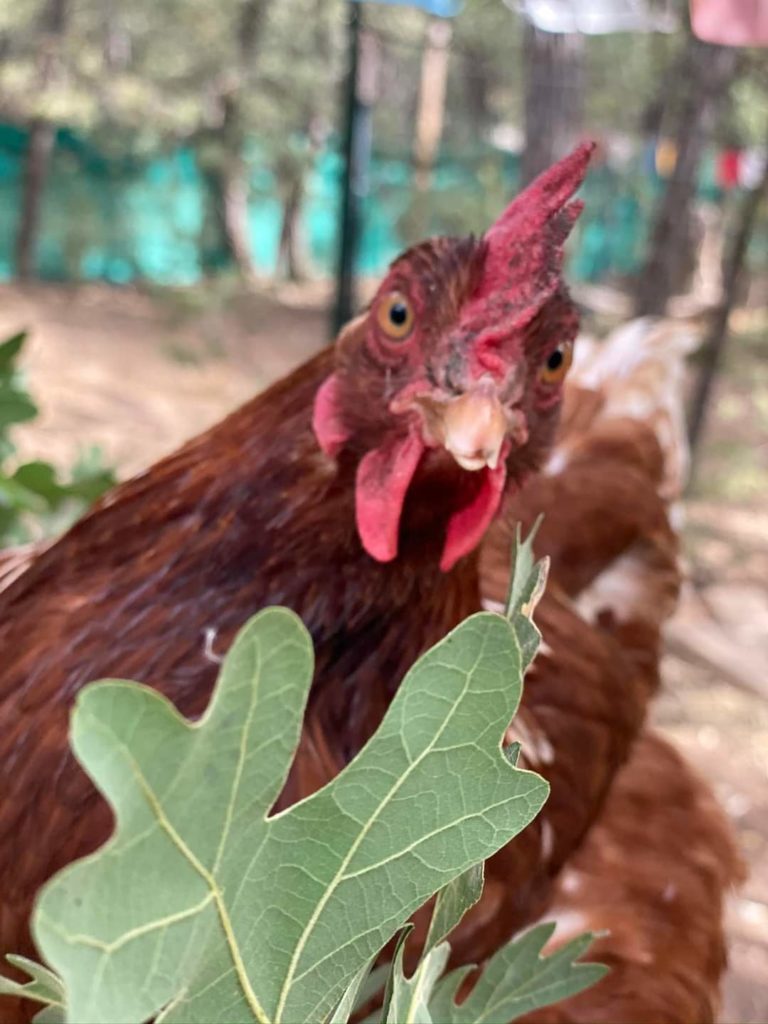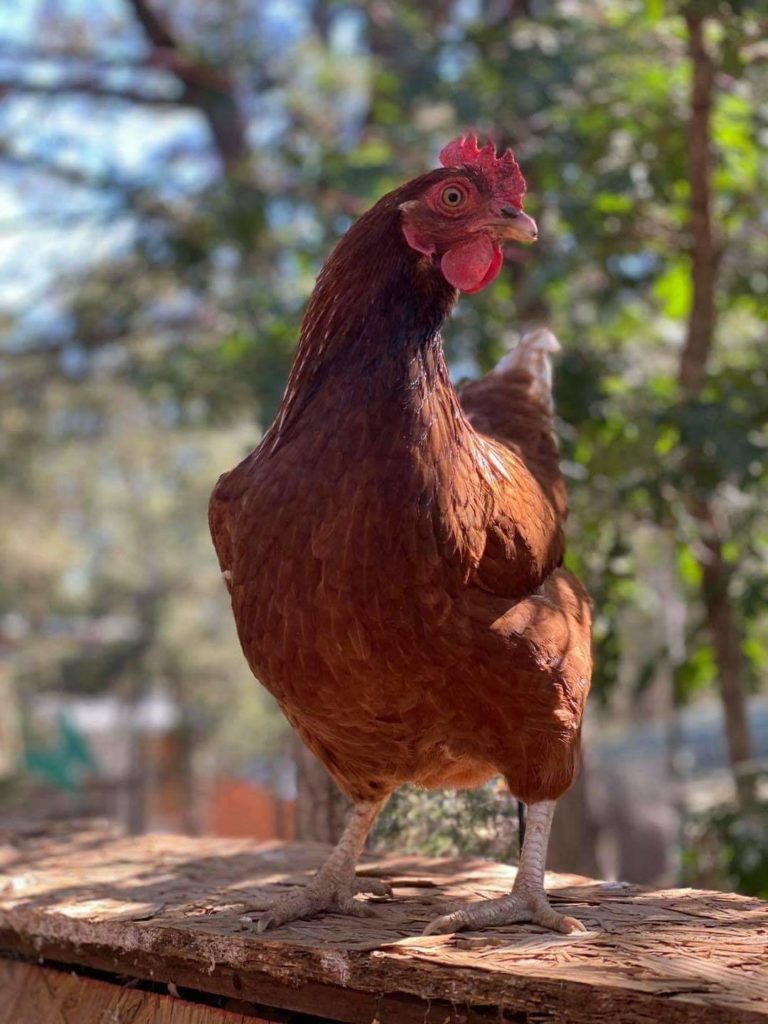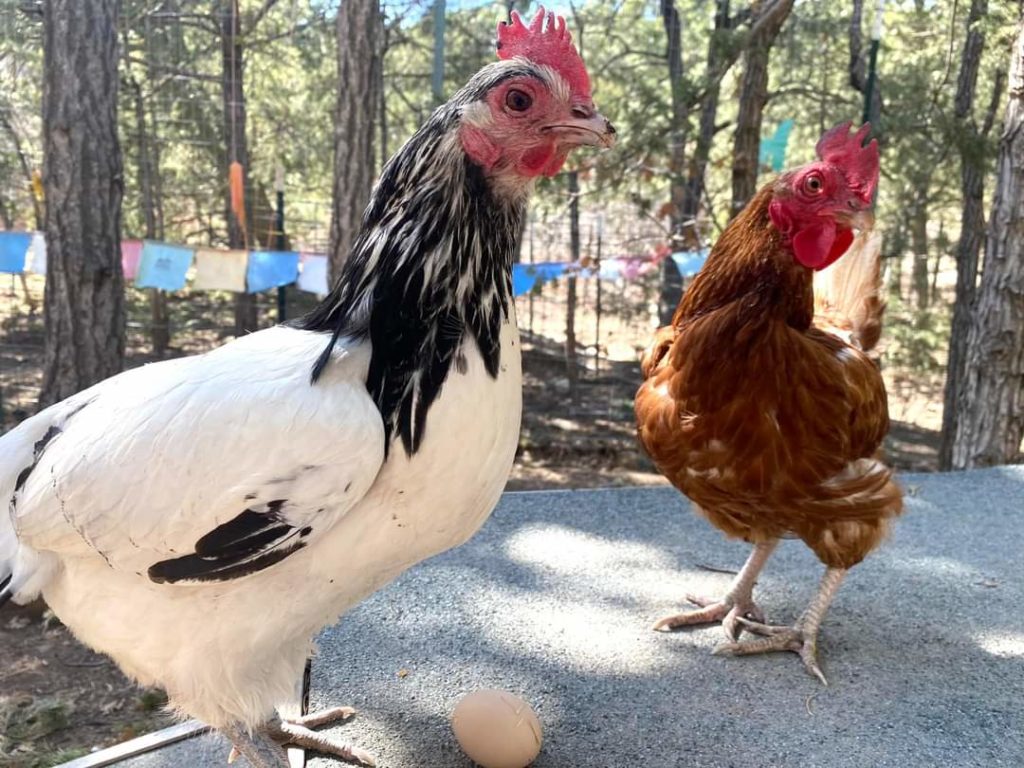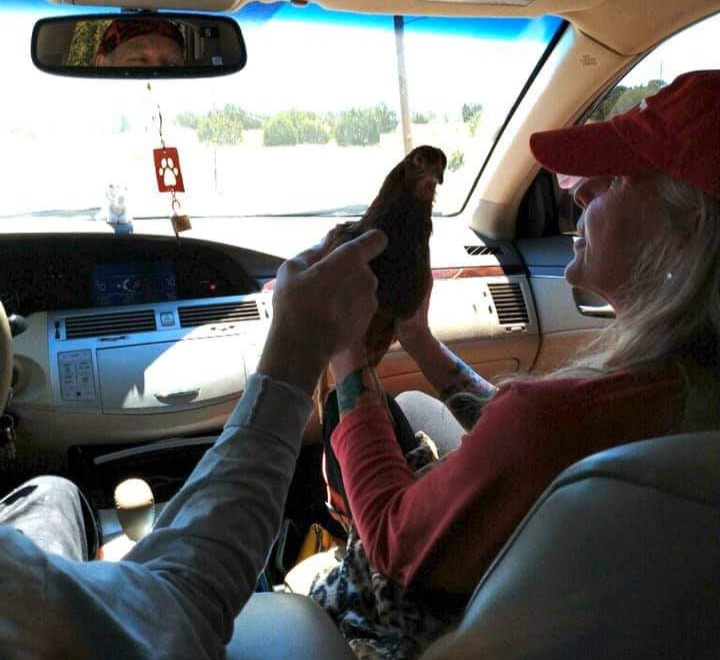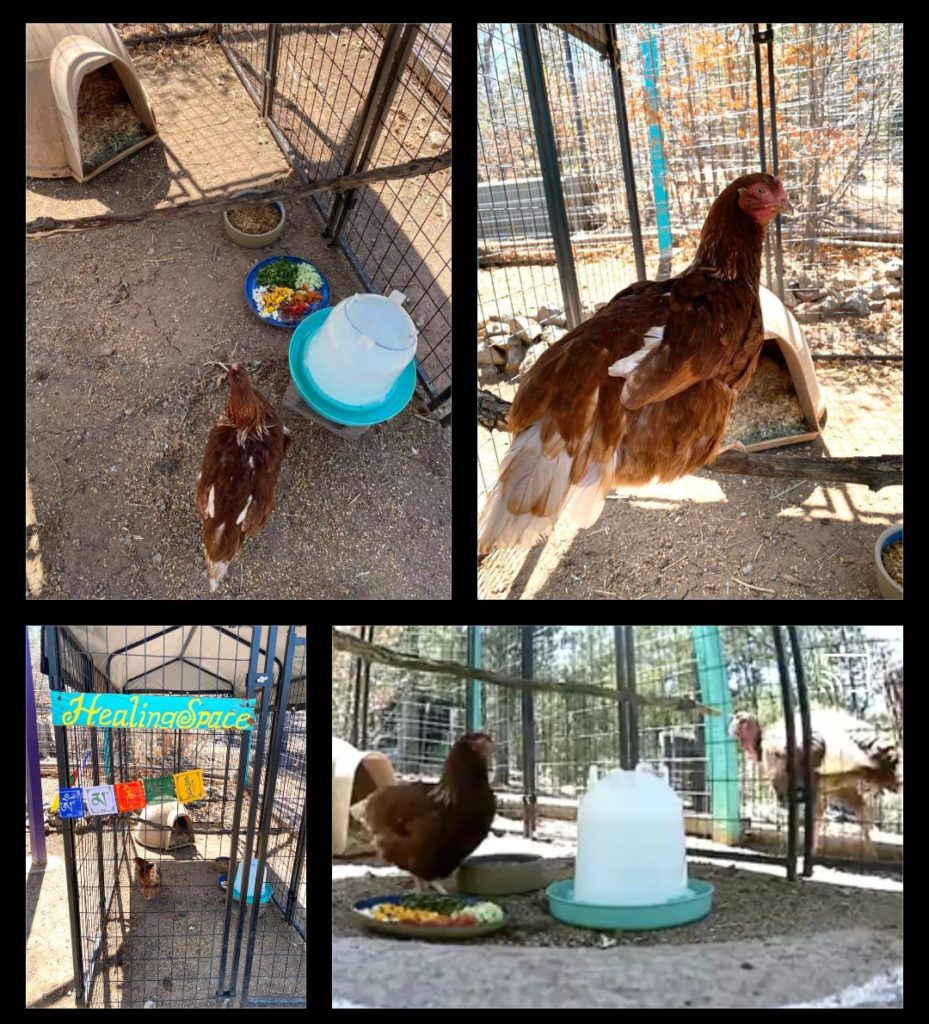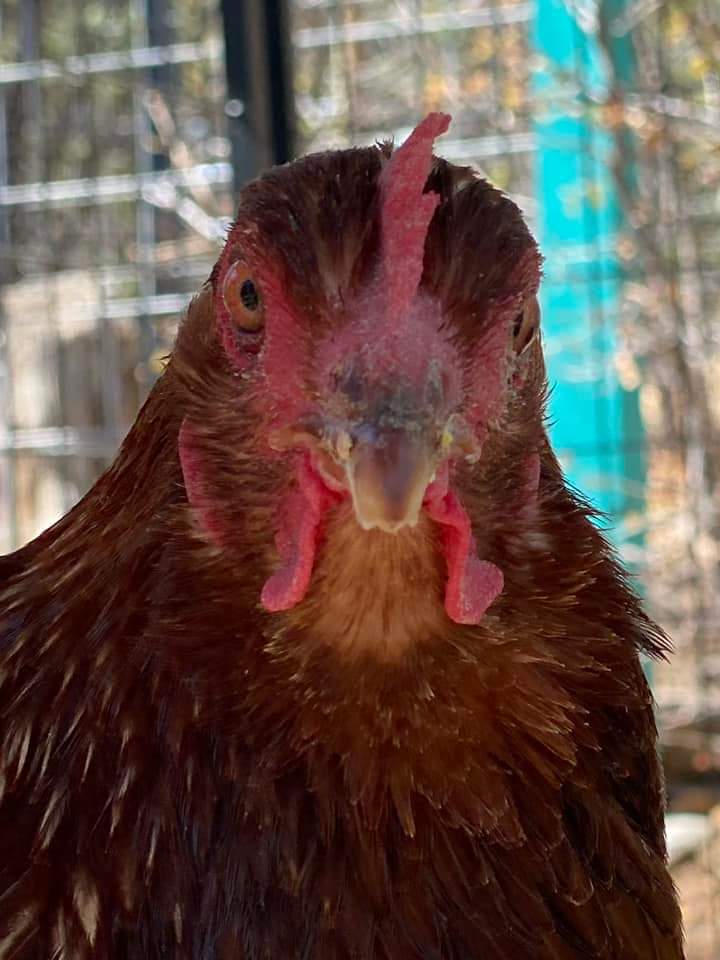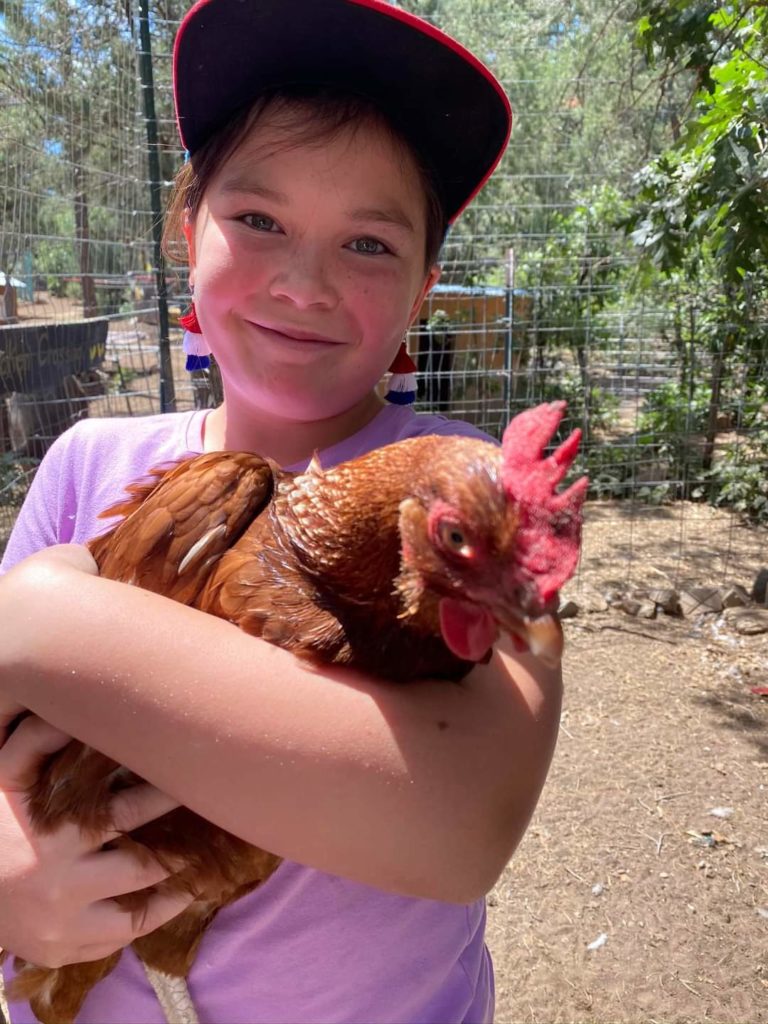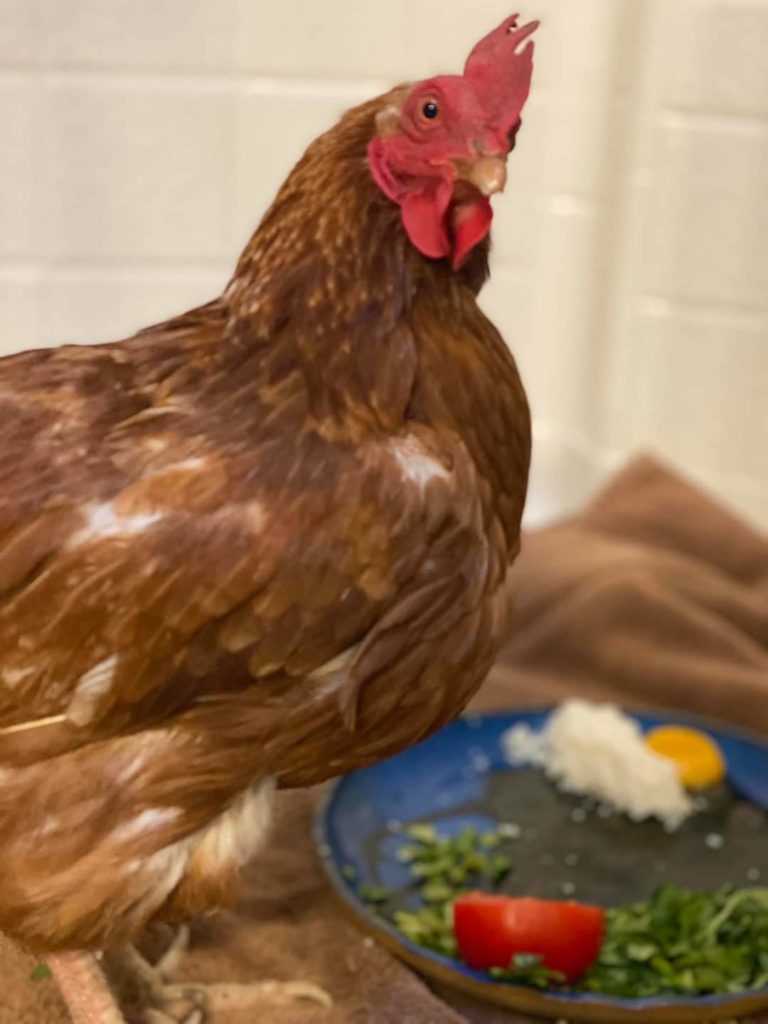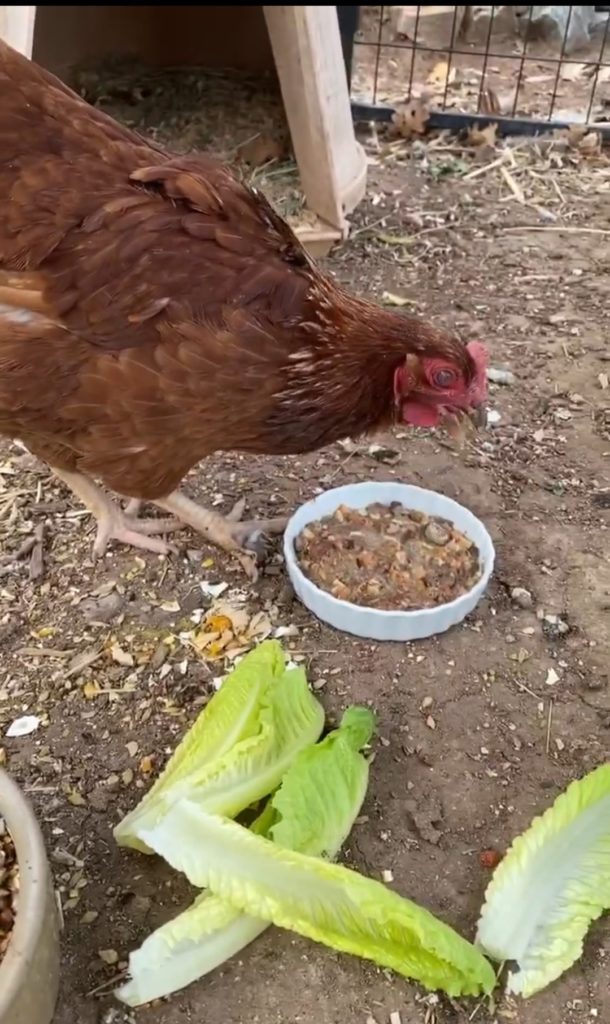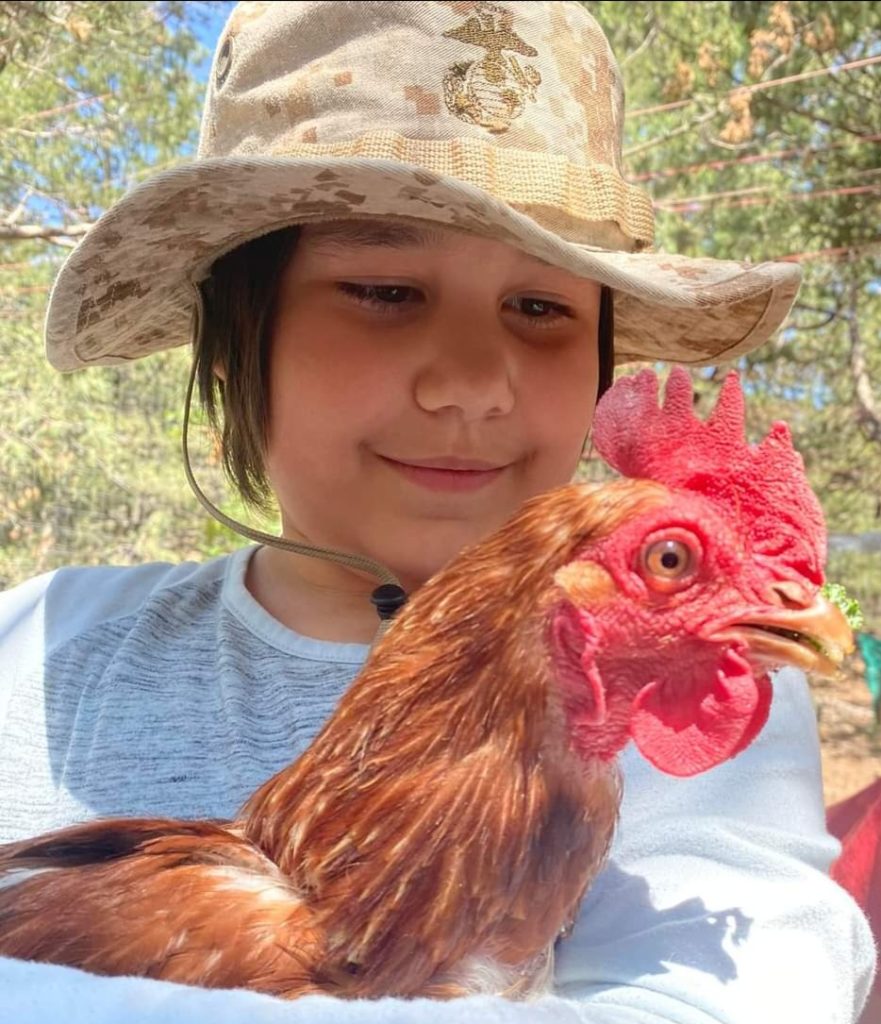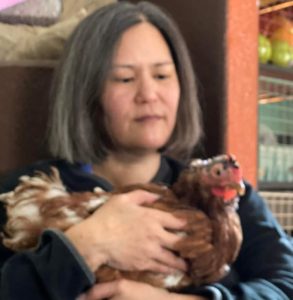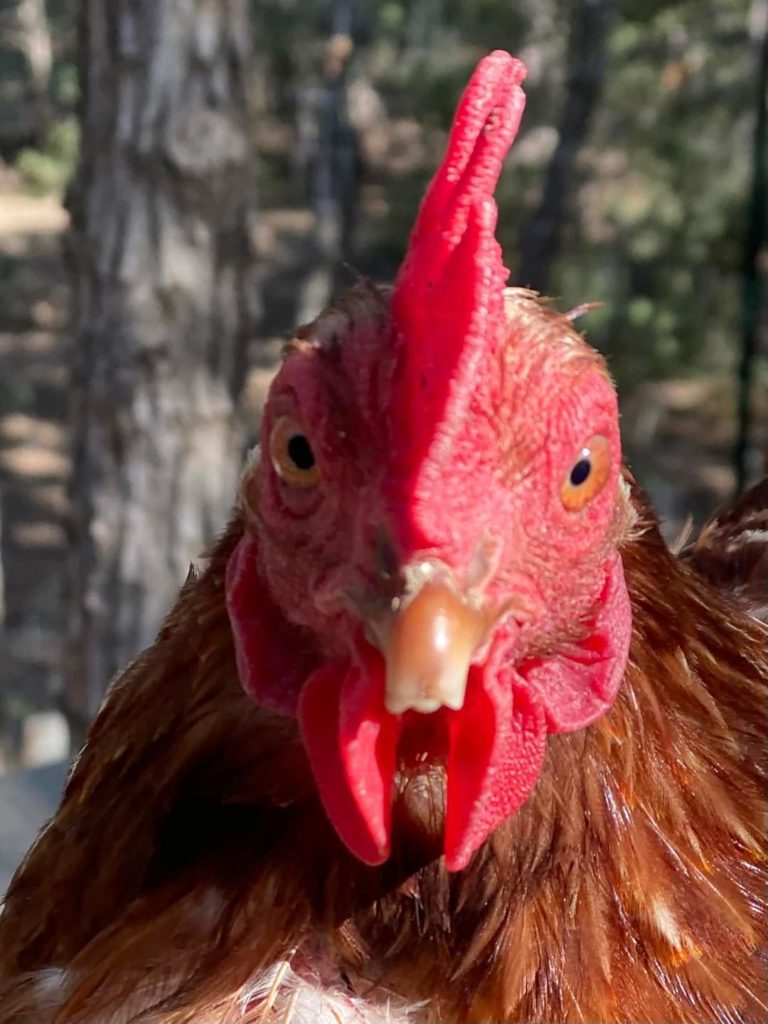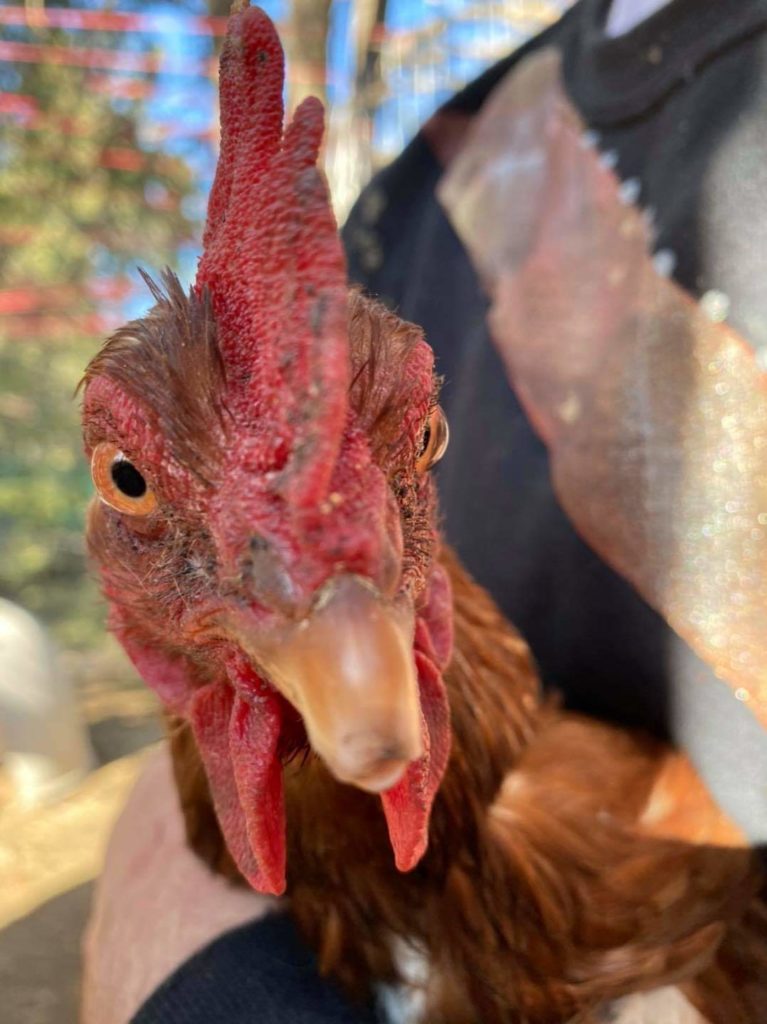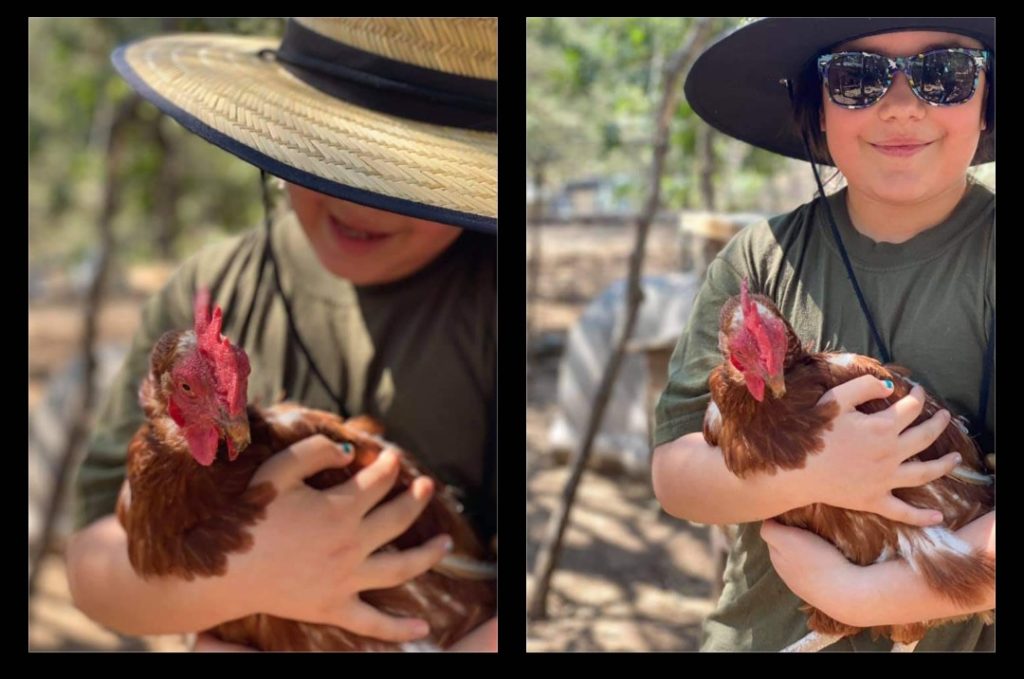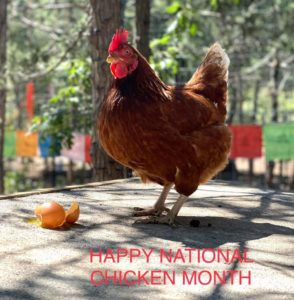LP
We received a call from the Abq Eastside Animal Shelter about a little abandoned hen that was struggling ~ malnourished and dehydrated
They said they were not set up to care for her, so off we went to give her a fighting chance.
Meet Laura Pergolizzi (named after the musician) ~ we will lovingly call her LP chick-a-dee!
LP spent time in the healing space within the aviary ~ both eyes opened, she was vetted and started to eat well!
Please consider a small donation to ensure that the rest of LP’s life is the the best of her life.
Or if you are able, sponsor LP with a $10 monthly donation that helps with her food, treats, housing, veterinary bills and meeting all her other needs. Thank you!
Chickens can distinguish among more than 100 faces of members of their species – who knew that their memories rival those of elephants?
Chickens have full-colour vision, just like we do.
Chickens tell each other about what they see. Chickens communicate with more than 24 vocalisations, each with a distinct meaning, including warning their friends about different types of predators or letting their mothers know whether they’re comfortable.
Chickens have pain receptors, enabling them to feel pain and distress. Just imagine their agony, then, when they endure mutilations such as having the ends of their sensitive beaks cut off with an infra-red laser – with no painkillers.
Hens defend their young from predators. Next time someone calls you “chicken” as an insult, you know what to tell them!
Chickens love to play and will run, jump and sunbathe when given the chance – yet billions of them spend their entire lives in cramped sheds with less floor space than an A4 piece of paper.
Chickens dream just like we do. They experience REM (rapid eye movement) during sleep, indicating that their minds may be wandering far from the four walls of the factory farms where they are imprisoned.
Wild chickens lay only approximately 10 to 15 eggs a year during breeding season. The hens who are bred by the egg industry to produce eggs every single day often suffer from painful reproductive disorders and become exhausted after just a few years.
Research suggests that chickens are cleverer than toddlers. Hens have exhibited mathematical reasoning, self-control and even structural engineering.
Chickens know who’s boss. Just like us, they form social structures, known as “pecking orders”, and all chickens know their place on the ladder. It’s only when they’re packed into sheds on intensive farms with tens of thousands of other birds that their social hierarchy collapses and stress leads to feather-pecking and cannibalism.
Chickens originate from tropical rainforests, where they evolved for millions of years, and artificial farm pastures leave hens feeling vulnerable and exposed.
Studies show that chickens survive a predator attack 90 per cent of the time while living in their natural environment.
Chickens are the closest living relative to the T. rex, though perhaps not quite as scary!
Roosters will attempt to woo hens by performing a little dance, called “tidbitting”, involving moving their heads up and down and making a certain type of call. Female hens are also thought to be especially attracted to roosters who have a large wattle!
Chickens display object permanence – an understanding that when an object is hidden, it still exists. Even young children don’t have this ability.
Mother hens talk to their unborn babies, and they chirp back through their shells. Factory-farmed chicks never meet their parents because they are taken away as soon as they’re laid.
They can navigate using the sun, which helps them find food and water and even know what time it is. Many chickens raised for meat or eggs, however, will never even see the sun from their dark, windowless sheds.
Chickens love dust baths and become extremely frustrated in factory farms when they aren’t able to clean themselves this way. The bathing helps to ward off parasites as well as maintaining feather insulation.
Wild chickens survive for five to 11 years in their natural environment. Chickens raised for meat are often slaughtered when they’re just 41 days old – for “free-range” birds, this period increases to just 56 days old. Male chicks born into the egg industry are routinely killed as soon as they’re born.
Finally, chickens are ADORABLE!
